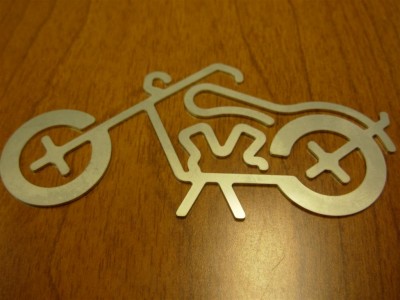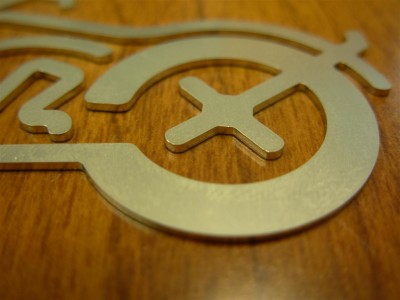The laser beam itself is characterized as coherent radiation of a single wavelength, which is advantageous because the wavelength will not dissipate its energy very quickly. It is well-suited to handle the energy transfer needed to cut many different materials.
As mentioned, modern lasers use CO2. The gas is the stimulated medium, just as the ruby crystal was in the beginning.
Lasers are well-suited for cutting because the process involves polarizing and focusing a beam of high-power light onto the work piece, such that it will melt or burn along the cutting line, ensuring a clean edge.
To clear the cut and prevent any potential combustion from occurring, cut-assist gases are aligned with laser beams. These gases help eject any melted materials clean away from the cutting area. Some examples include air, oxygen and nitrogen, each of which is responsible for a different degree of cutting.
Nitrogen, for example, is used when cutting stainless steel, as it provides a ‘shield’ that protects the hot stainless steel from surrounding oxygen. This is similar to the use of argon in welding processes.
The laser beam is directed to the cutting head by customized, water-cooled mirrors with special lenses made of zinc selenide (ZnSe). The beam diameter before the lens is about 25 mm (1 in.), which is the reduced to 0.25 mm (0.01 in.) at the focal point where cutting occurs.
Deeper benefits
It is helpful for signmakers to familiarize themselves with the basic science and process behind laser technology, as they can then fully understand where laser cutting would be useful in their manufacturing processes.
As mentioned, the basic advantages of laser cutting include its flexibility, efficiency and cleanliness. The following, however, are some of the more specific advantages in terms of improving the manufacturing processes of even the smallest of companies:
- Low fixture costs.
- High feed rates.
- Multiple-axis capabilities, requiring fewer parts.
- Cutting tools that do not come directly into contact with the material, reducing wear and tear.
- Improved yield, producing more parts per sheet of material with less scrap.
- Increased savings through this more efficient use of material.
- Efficient and less expensive production of prototypes and small to large runs, as no tooling is involved.
- Ability to react quickly and adapt to changing markets and production needs, with smaller quantities.
- Improved processing, whereby multiple jobs can be combined and cut in a single batch.
- Reduced setup time.
- Cleaner, safer work environment.
- Improved speed, accuracy, consistency and control in the manufacturing process.
- Quicker turnover, as laser-cut materials that require no edge cleaning can more readily be shipped to customers.
- Reduced inventory, due to improved production-run efficiency.
- Improved product appearance, as the lasers’ minimal heat-affected zone (HAZ) helps prevent distortion.
- Reduced risk of injury compared to more traditional mechanical cutting methods.
These are just some of the benefits companies like DisplayIt are experiencing today because they invested in laser machining technology.
Daniel Austin is sales and marketing manager for MultiCam Canada, which provides automated CNC cutting systems for the sign industry. For more information, visit www.multicam.ca.








